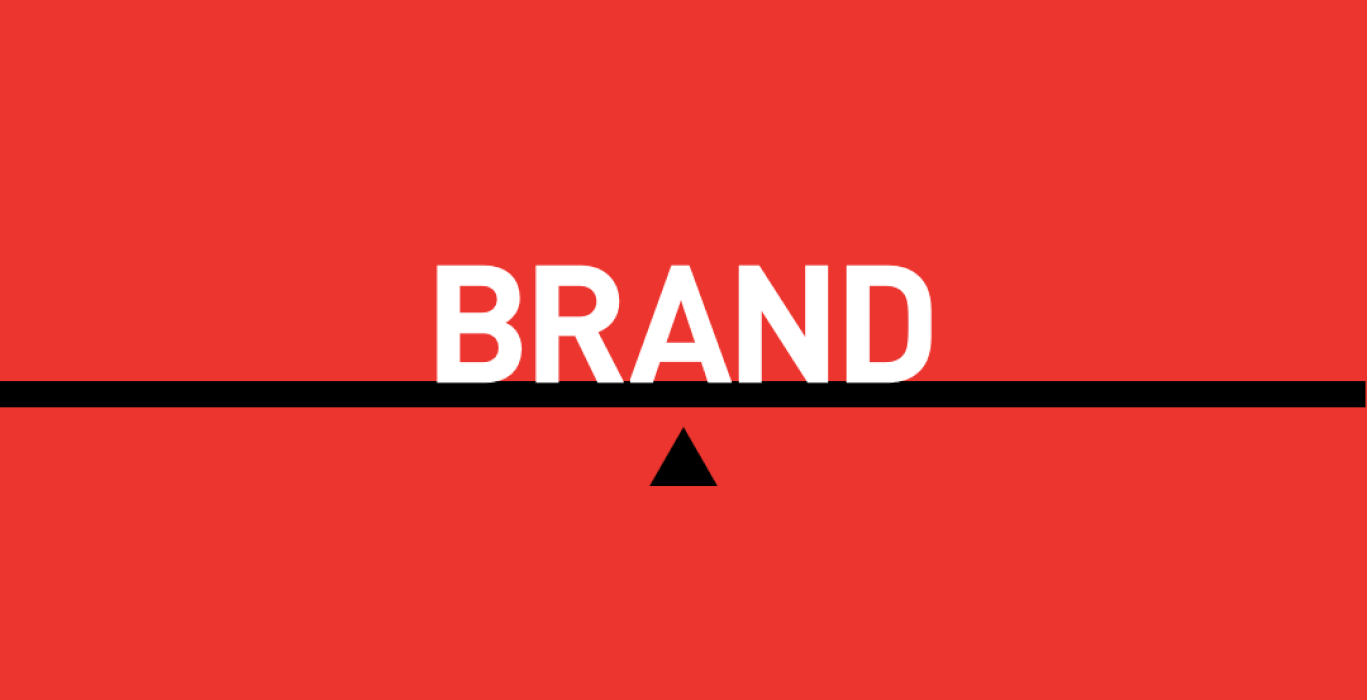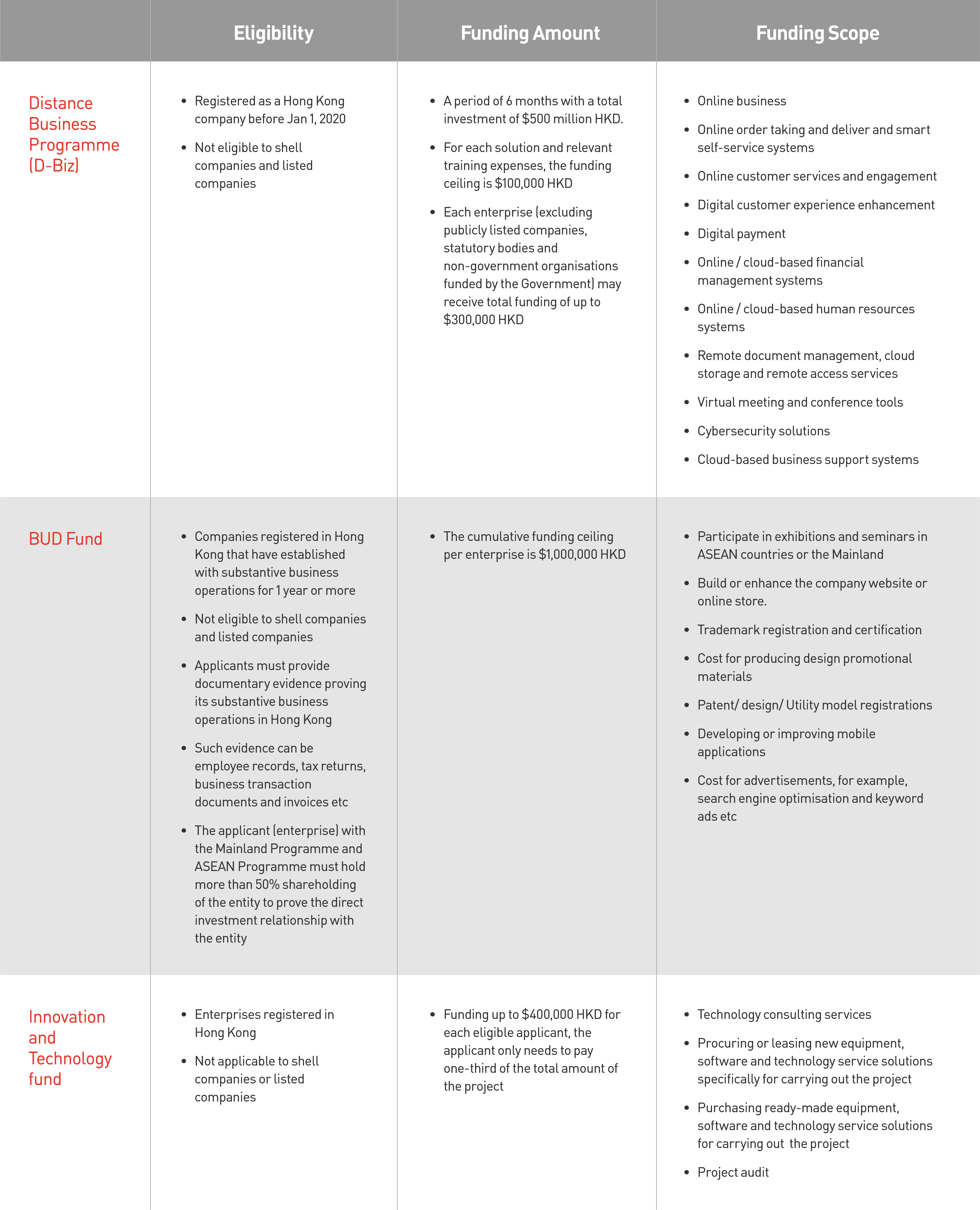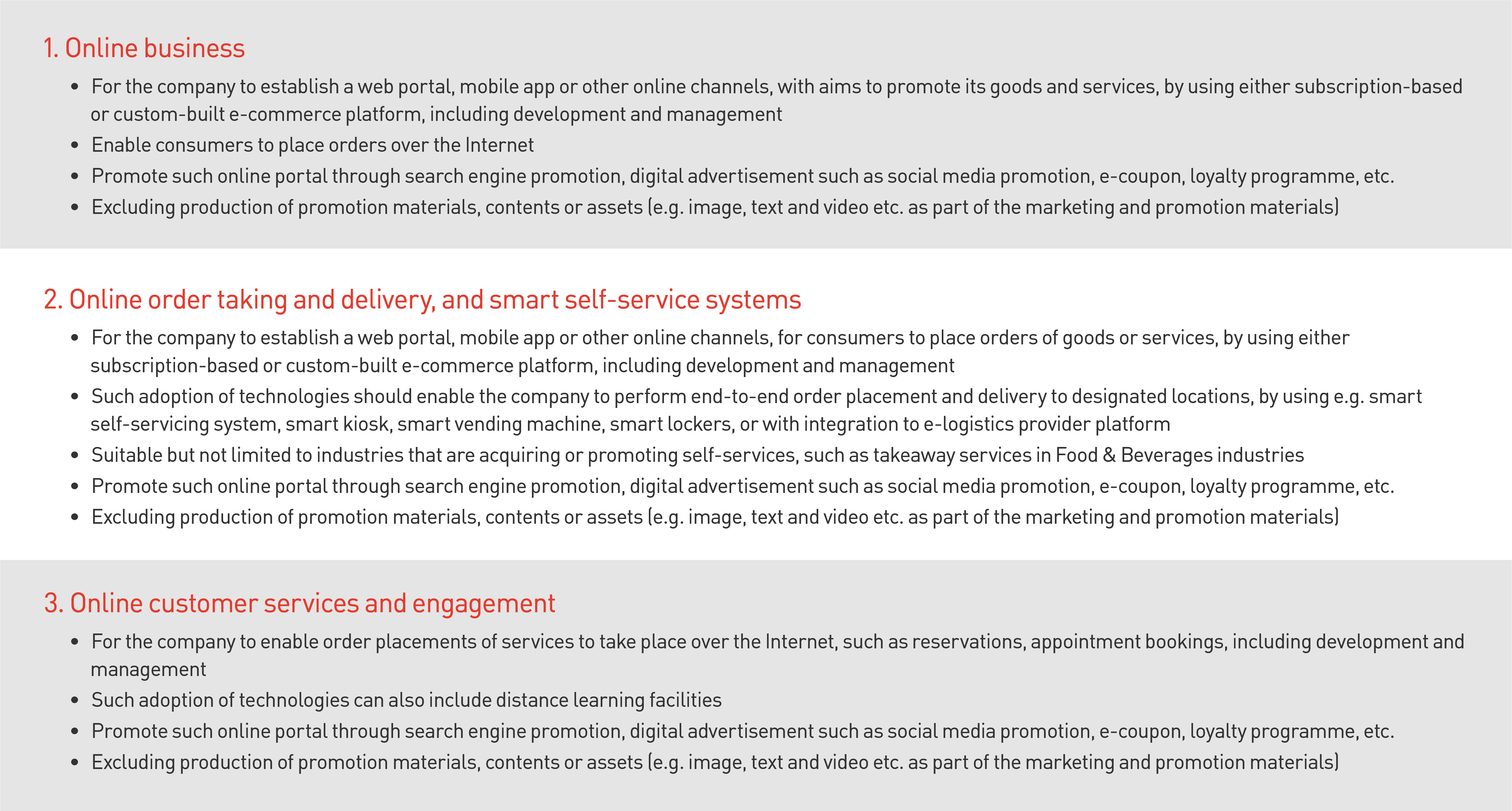How to Leverage Hong Kong’s Government Funding Schemes to Augment Your Brand?
By ALEX LI
 Affected by the epidemic, companies around the world are forced to go digital in order to keep pace with the sudden market changes. Those who can’t keep up, like Zara, have no choice but to undergo a transformation in the face of a devastating $3.6 billion loss. Meanwhile, those who can keep up are steadily stepping forward towards the digital horizon.
Digital businesses are changing all the time and it is not only about the convenience of buying and selling. Most importantly, companies need to transform their brand image and core values to fit into digital ecosystem to get themselves prepared for the post-epidemic period.
The Hong Kong government is now offering funding support to small and medium enterprises. Some have already received the funding while many are still waiting or hesitating whether they should transform their business. For those who are looking forward to expanding their business to a new sector, using government funding is an ideal solution to save budget and time. While conducting digital marketing, besides aiming for cost recovery, it is also crucial to pay attention to maintain the brand image. While digital marketing strategy may vary across businesses, DSIGN Branding will introduce you ways to build your brand image, allowing you to sharpen your business competitiveness during the transition period.
Affected by the epidemic, companies around the world are forced to go digital in order to keep pace with the sudden market changes. Those who can’t keep up, like Zara, have no choice but to undergo a transformation in the face of a devastating $3.6 billion loss. Meanwhile, those who can keep up are steadily stepping forward towards the digital horizon.
Digital businesses are changing all the time and it is not only about the convenience of buying and selling. Most importantly, companies need to transform their brand image and core values to fit into digital ecosystem to get themselves prepared for the post-epidemic period.
The Hong Kong government is now offering funding support to small and medium enterprises. Some have already received the funding while many are still waiting or hesitating whether they should transform their business. For those who are looking forward to expanding their business to a new sector, using government funding is an ideal solution to save budget and time. While conducting digital marketing, besides aiming for cost recovery, it is also crucial to pay attention to maintain the brand image. While digital marketing strategy may vary across businesses, DSIGN Branding will introduce you ways to build your brand image, allowing you to sharpen your business competitiveness during the transition period.
What is Brand Image?
A brand image is the customers’ perception of your brand. Building a brand image exerts a level of control over customers’ impressions towards your brand and informs you of the most appropriate marketing strategies. For example, the brand image and core value of Nike is honoring athleticism and sportsmanship; and their brand identity, which partly consists of their logo (the Swoosh), slogan (Just Do It), ads, and products, help communicate these values to customers, which reciprocate by buying Nike’s products. Companies can formulate effective strategies once they have successfully shaped their brand image, allowing them to create brand exposure, seek potential customers, build relationships and foster cohesion with customers. These ultimately move businesses forward. [How to Better Understand your Target Audience? 3 Case Studies] [What Differentiates Brand, Branding and Marketing?]What kind of support does the government provide to aid businesses?
 The subsidized projects offered by the Hong Kong government are quite diverse and complex, undoubtedly posing difficulties for overseas enterprises to apply. To save time and money, small and medium enterprises have to first establish footing in the right market in order to build their foundation and drive revenue growth. DSIGN Branding is now providing professional marketing consulting services to those who wish to consolidate their position in the local market or expand their business to the mainland market, formulating their digital transformation. If you are interested in these services, please contact us here.
The subsidized projects offered by the Hong Kong government are quite diverse and complex, undoubtedly posing difficulties for overseas enterprises to apply. To save time and money, small and medium enterprises have to first establish footing in the right market in order to build their foundation and drive revenue growth. DSIGN Branding is now providing professional marketing consulting services to those who wish to consolidate their position in the local market or expand their business to the mainland market, formulating their digital transformation. If you are interested in these services, please contact us here.
The First Step in Conducting Digital Business – Social Media Platform
Enterprises tend to consider operating social media platforms when they start digital marketing, aiming to reach their target customers at an early stage of their transformation and to prepare for online sales. Social media platforms have a high rate of interaction, and enterprises who are new to digital transformation often get carried away by making popular posts and neglect posting content that align with their brand image. Enterprises who only care about pursuing popular posts and paying little attention to building brand image and sales channels will end up with an increase of brand exposure but a failure to drive revenue growth. Therefore, enterprises must formulate brand guidelines, ensuring that their posts and content closely align with their brand values. At the same time, it is also essential to make use of all the features that social media platforms provide to drive product and service sales. At present, social media platforms already provide various convenient sales functions, which allow merchants to design product catalogues and make quick payments within the platform, speeding up the transaction process. The Distance Business Programme (D-Biz) subsidizes enterprises to establish their digital presence, online order taking and delivery, smart self-service systems and online customer services and engagement. On top of that, social media platforms play a significant role in promoting posts and advertisement, connecting both the enterprise and customers.
The Distance Business Programme (D-Biz) subsidizes enterprises to establish their digital presence, online order taking and delivery, smart self-service systems and online customer services and engagement. On top of that, social media platforms play a significant role in promoting posts and advertisement, connecting both the enterprise and customers.
All tools work hand in hand to build brand image
How tools are used depend on the industry. Service providers, for example, may use Facebook to provide a virtual product catalogue, allowing customers to browse their goods, as well as installing a chatbot to collect customers’ information, orders and appointment booking to deliver services. On the other hand, retailers may also use Facebook Offers to give away vouchers and attract customers with discounts. On top of that, using Facebook Marketplace to start instant selling, allowing customers to purchase their goods with better deals compared to offline purchasing. It is important to also realize that Facebook, Instagram and other social media platforms target different audiences. It is crucial to have a full understanding of your company and its product orientation before deciding which platforms to use. The features on social media platforms vary, bringing convenience to enterprises who want to optimise the communication of their brand values, increase the business efficiency and provide the most appropriate service to their target customers. When all elements in the social media page, including logo and posts, maintain consistency in aesthetics, the brand values will be vividly shown. When we utilize different tools to help a brand communicate a story, the differences between enterprises will be formed, allowing brands to create their own impact.References:
1.https://hongkong.ahk.de/news/news-details/driving-digital-transformation-business-after-corona
2.https://www.brandingrecords.com/blog/boost-your-branding-and-advertising-with-the-bud-fund”> https://www.brandingrecords.com/blog/boost-your-branding-and-advertising-with-the-bud-fund
Edited by DSIGN Team For cooperation, please contact: info@dsignhk.stg.jiralog.com
